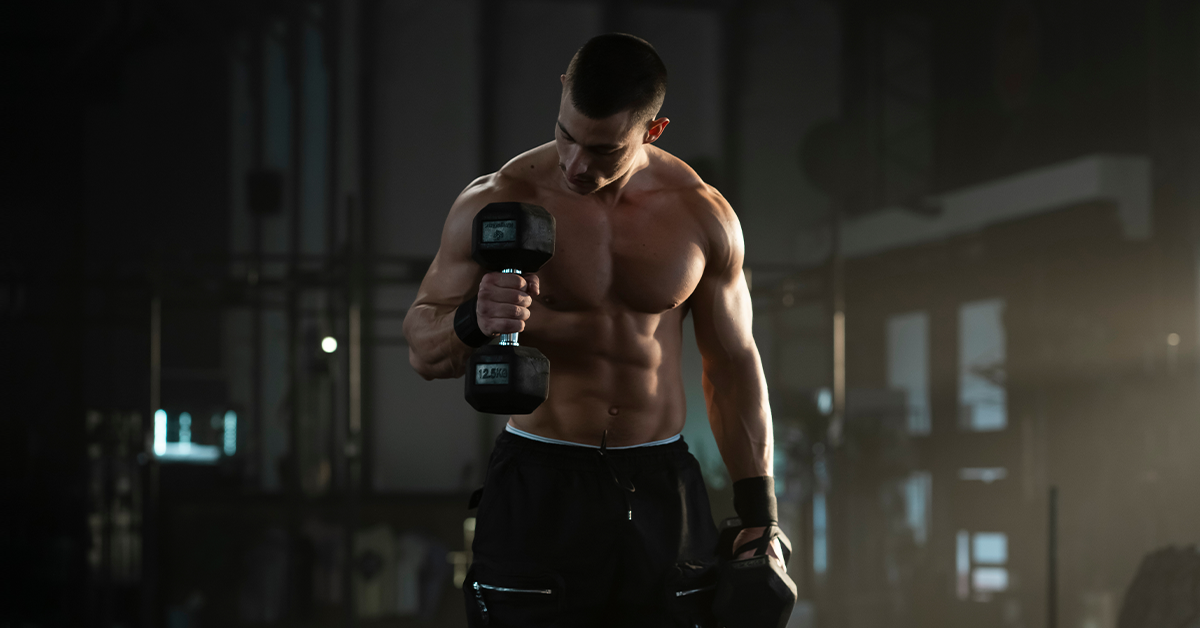What really makes your muscles grow?

When it comes to achieving muscle growth, there is a treasure trove of information discussing everything from diet to exercise including different types of training, protein intake, set and rep counts and so much more. However, the basic physiology behind muscle growth or strength development is often not discussed. Today we will be covering why your muscle grows and explore how to optimise your training and nutrition for strength, mass or both.
Muscle Growth Basics
Let’s look at how muscle grows in response to training.
Myofibril Hypertrophy involves the increase in the size and number of myofibrils, the smaller units within your muscle fibres that allow you to contract and flex your muscles. This type of hypertrophy is primarily caused by heavy resistance training, such as powerlifting or strength training, which uses more myofibrils and contractile units during exercise.
To support hypertrophy, nutrition is key. An adequate intake of protein and overall calories is essential to promote muscle repair and growth. Supplementing with a protein shake post-workout such as Platinum Whey, or Whey Isolate, will support myofibril repair and maintenance. Whey isolate is a fast-absorbing protein that is also suitable to those who are sensitive to lactose.
Sarcoplasmic Hypertrophy, on the other hand, focuses on increasing the volume of the fluid and energy-rich content surrounding myofibrils, known as the sarcoplasm. It is often associated with bodybuilding-style training involving higher reps and shorter rests or more endurance focused training. Carbohydrates are often consumed to fuel workouts and can promote a cell-swelling effect (muscle pump) causing the muscles to appear larger and fuller.
Supplementing with Creatine Monohydrate or Creatine HCL will increase the available creatine phosphate in the sarcoplasm and give your muscles more energy for those last few reps.
Both forms of hypertrophy rely on adequate protein and carbohydrate intake to be effective, and the main differentiating factor between the two is what type of training you are doing. By favouring specific forms of training, you are able to induce different responses on your muscles and the fuel which drives them.
Natural Elements and Muscle Growth
There are several factors that are difficult to control that play a key role in influencing muscle growth, such as hormones and genetic makeup. However, this is not to say that you cannot work with what you have to maximise your potential for muscle growth:
Testosterone stimulates protein synthesis and is essential for hypertrophy (adding muscle mass). Good quality nutrition, rest and exercise can have a positive effect on testosterone production. There are also supplements that can be taken to help enhance natural testosterone production.
Insulin Growth Factor (IGF) is another critical element. It regulates cell growth, including muscle cells. IGF-1, in particular, plays a role in muscle development.
Human Growth Hormone (HGH) stimulates the production of IGF-1 and plays a role in muscle growth, especially during puberty.
Understanding how these natural elements work and interact with each other is fundamental for anyone looking to optimise muscle growth. Although it may be difficult to manipulate these directly, ensuring that you get adequate sleep and follow a healthy lifestyle (quality nutrition and adequate hydration) will result in an optimal anabolic environment to promote muscle mass.
How to maximise training for your goals
Training requirements tend to vary between hypertrophy and strength. Muscle strength increases with heavier, low-repetition resistance training, which recruits more fibres during the exercise and promotes overall myofibril growth.
In contrast, muscular hypertrophy typically occurs with higher-repetition training, utilising lighter (or moderate) weights and by placing the muscle under tension for longer periods of time. This could mean anywhere from 10-15 reps and up; this results in more muscle pump and an enlargement of the sarcoplasm surrounding the muscle fibres themselves.
A common practice in bodybuilding is carb-loading. First depleting and then loading on carbs before competitions typically gives your muscles a fuller, harder appearance. However, everyone’s body will react differently, some require shorter periods of carb-loading versus others so be sure to learn how your body will react to this practice.
How will this affect your training?
Performance athletes, powerlifters, and bodybuilders have distinct goals when it comes to muscle growth. Performance athletes focus on functional strength and explosive power, emphasising endurance and stamina. Powerlifters aim for maximal strength, while bodybuilders prioritise muscle size, often favouring different methods of training to reach their desired results.
Understanding the science behind muscle growth can be challenging, however proper diet and training will always be the key to success. Tailor your workout plans and ensure that you are training for your goals. Muscular endurance and hypertrophy generally requires light-to-moderate weight, more reps, and specific training techniques (such as time under tension, drop sets, and supersets), whereas muscle strength requires heavier weight loads and lower volume. Be sure to take this into consideration when designing your workout plan and diet and you’ll see results in no time.
Product Links:
https://www.npl.za.com/collections/proteins/products/platinum-whey
https://www.npl.za.com/collections/proteins/products/100-whey-isolate
https://www.npl.za.com/collections/creatines/products/creatine-hcl
https://www.npl.za.com/collections/creatines/products/creatine-monohydrate






